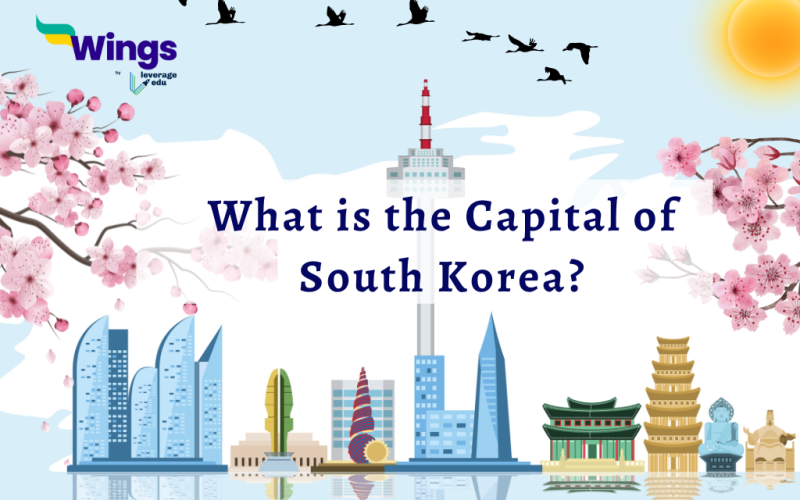The capital of South Korea is Seoul. Seoul is a megacity with over ten million population and is considered the second-largest capital city by area in the world. Located on the banks of the Han River (Han-gang) in the country’s northwestern region, about 37 miles (60 km) from the Yellow Sea (west). It has become a centre of the administration, culture, economy and politics of South Korea, because of the tremendous growth and development in the capital. Read more about what is the capital of South Korea in detail here!
Overview of Seoul: The Capital of South Korea
Table of Contents [show]
For a short period (1399–1405), Seoul was the nation’s capital, from 1394 until the official partition of the country in 1948. Seoul has been known by many different names in the past and is believed to have come from the Korean word, Seoraneol.
- During the Joseon (Yi) dynasty (1392–1910) and the era of Japanese occupation (1910–45), though its official titles during these times were Hanseong and Gyeongseong, respectively.
- The city of Seoul has been continuously inhabited for more than 2,000 years, dating back to its establishment in 18 B.C. by the Baekje, one of the Three Kingdoms of Korea.
- It also served as the capital of Korea throughout the Joseon Dynasty and the Korean Empire. During the period of Japanese rule in the early 20th century, the city was known as Gyeongseong.
- In 1945, Korea achieved its independence from Japan, and the city was renamed Seoul.
- In 1949, Seoul was detached from Gyeonggi Province and designated as a “special city,” but it was nearly completely destroyed by North Korean forces during the Korean War in 1950.
- On March 14, 1951, the United Nations forces regained control of Seoul. Since then, the city has undergone significant reconstruction and expansion.
Also Read – What is the Capital City of Assam?
Geography, Demography and Economy of Seoul
Covering an area of 234 square miles (605 square km), Seoul is home to a population of 9,586,195 as of 2020.
- Seoul is surrounded by lush green mountains, yet is situated in the low-lying areas.
- The majority of Seoul’s inhabitants are of Korean heritage, with minor populations of Chinese and Japanese.
- Seoul experiences a climate classified as both humid subtropical and humid continental, lying at the intersection of these two climate types.
- As one of the world’s biggest cities and a top global metropolis, Seoul has evolved into a major base for various multinational corporations.
- At present, it contributes more than 20% of South Korea’s total gross domestic product.
- Beyond its significant multinational corporations, Seoul’s economy is also based on sectors like tourism, construction, and manufacturing.
- The city is also celebrated for its vibrant shopping scene and the Dongdaemun Market, which stands as the biggest market in South Korea.
- The city is structured into 25 administrative areas known as gu. Each gu is governed independently and is further subdivided into various neighbourhoods called dong. The size and population of each gu in Seoul differ significantly.
- Songpa boasts the highest population, whereas Seocho is identified as the gu with the greatest land area within Seoul.
Did you know? South Korea is the birthplace of groups like BTS and BLACKPINK, this music industry taking the world by storm.

Culture of Seoul
Seoul has become the cultural heart of South Korea. Bordered by hills, Seoul is dotted with both small and large parks.
- It is the residence of the National Academy of Arts, the National Academy of Sciences, and almost every major academic and library group in the country.
- The National Classical Music Institute, dedicated to safeguarding traditional Korean court music and training musicians, is supported by two Western-style symphony orchestras.
- Moreover, the city boasts a national theatre, an opera house, and a variety of public and private museums, with the primary branch of the National Museum of Korea located on the premises of the Gyeongbok Palace.
- The Sejong Center for Performing Arts, situated south of the palace, offers venues for concerts, plays, and art exhibitions and is home to an arts academy.
- Additionally, Seoul offers top-notch sports and leisure facilities ans is also known as emecca of sports.
- The Seoul National Capital Area has four UNESCO World Heritage Sites: the Changdeokgung Palace Complex, the Hwaseong Fortress, the Jongmyo Shrine, and the Royal Tombs of the Joseon Dynasty
- The art and music of Korea are famous and are globally known as “K-Pop”.
FAQs
In the modern era, South Korea has gained worldwide recognition for its impactful pop culture as K- drama, especially in music as K-POP, television series, and films, a trend known as the Korean Wave.
During the Joseon era, the city of Seoul was referred to as “Hanseong” (漢城) or “Hanyang” (漢陽).
Korea is an island in the eastern part of Asia at the moment, and it is split into two nations: the capital of North Korea is Pyongyang, while the capital of South Korea is Seoul.
Related Blogs
Now we hope you are clear on what is the capital of South Korea. For more such content, visit our general knowledge page.
 One app for all your study abroad needs
One app for all your study abroad needs















 45,000+ students trusted us with their dreams. Take the first step today!
45,000+ students trusted us with their dreams. Take the first step today!
